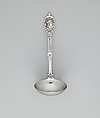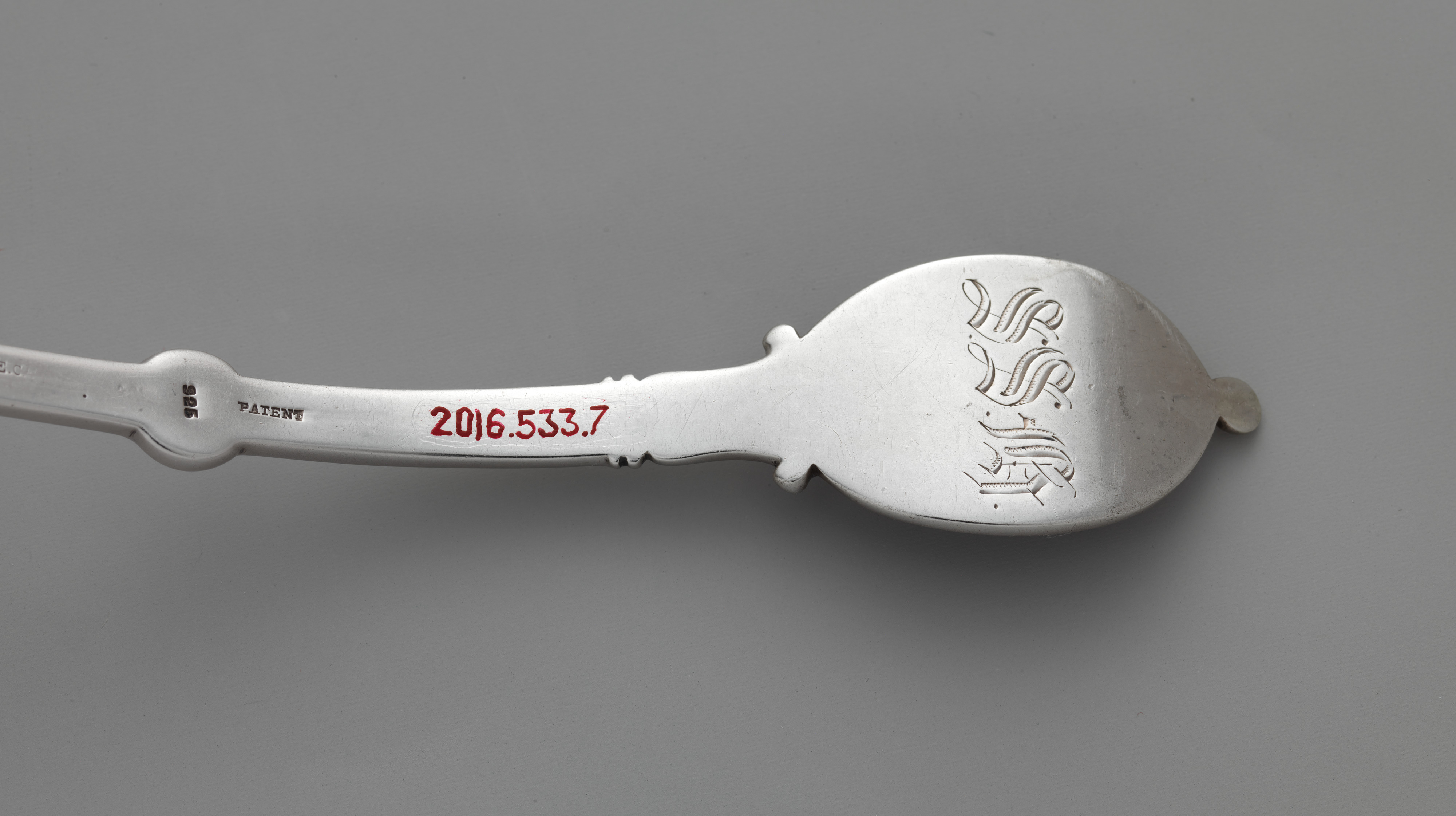Sauce Ladle
John R. Wendt American
Retailer J.E. Caldwell & Co. American
The mid-nineteenth century witnessed an efflorescence of creativity in the American silver industry, fueled by the burgeoning middle class’s increasing demand for refined luxury goods. Silversmiths devoted considerable time and creative energy to generating an endless variety of new designs and patterns. During the 1860s and 1870s silver flatware ornamented with portrait medallions inspired by antique coins and cameos enjoyed widespread popularity, with virtually every American silversmith producing their own proprietary "medallion" pattern. In 1862, the German-born silversmith John R. Wendt received the first patent for a medallion pattern, which is seen here in this elegant ladle. This pattern inspired innumerable variations and inaugurated a veritable mania for medallion flatware. Although this ladle is marked by the Philadelphia retailer J. E. Caldwell, most of the surviving examples of this pattern are marked by Ball, Black & Co. of New York, who held Wendt’s work in such high esteem that they forged a special relationship with him whereby Wendt occupied several floors in their building. Among medallion flatware, Wendt’s pattern truly sets the standard.
Due to rights restrictions, this image cannot be enlarged, viewed at full screen, or downloaded.
This artwork is meant to be viewed from right to left. Scroll left to view more.



